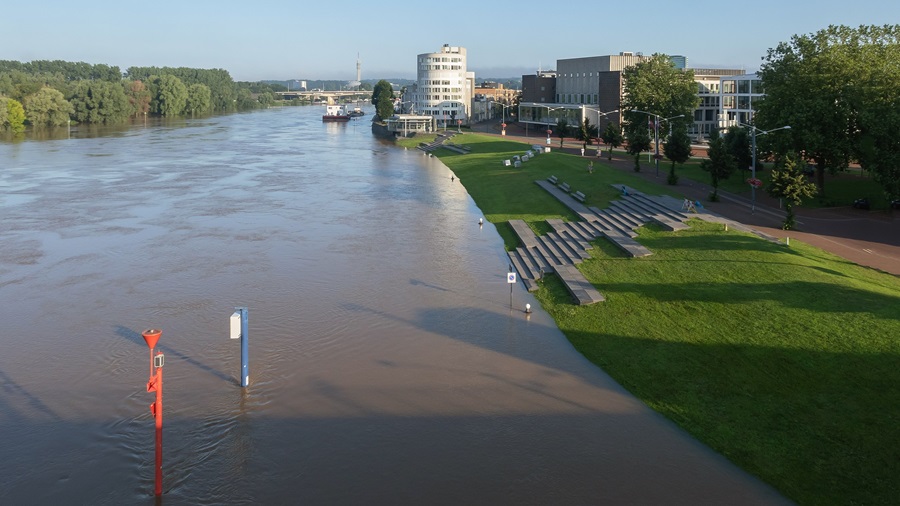Identifying the space required for Integrated River Management (IRM) program measures is urgent and crucial. The Environmental Impact Assessment Committee mentioned this in a consultancy report. According to the committee, clarity must be provided quickly on measures outside and inside the dams, because significant space is also needed for other programmes.
The Environmental Impact Assessment Committee has that advice It was prepared at the request of Infrastructure and Water Management Minister Mark Harpers. Within the framework of the Integrated River Management programme, the government, provinces, water boards and municipalities will work together in the coming decades on future-proofing the Meuse and Rhine river systems. Challenges and opportunities related to water safety, navigation, freshwater supply, nature and spatial quality are addressed side by side.
Due to problems related to low and high water, measures are needed to determine the location of soil and the drainage capacity of rivers. Strategic options have been captured in the Preferred Alternative (VKA) guideline, but no concrete measures have yet been identified. The Committee notes that this requires more knowledge about the consequences of climate change and the feasibility of large-scale measures.
Environmental interests have been fully taken into account
Given the decision to be taken by the Ministers of Infrastructure, Water Management, Agriculture, Nature, Food Quality and Internal Relations of the Kingdom regarding the follow-up of the IRM programme, an Environmental Impact Report (MER) plan has been prepared. The committee broadly assessed environmental impacts and ambitions.
According to the committee, a clear and summarized picture of tasks and missions in the river region has been drawn. An environmental impact assessment provides a valuable indication of the extent of potential consequences. The Committee believes that the EIA contains the information essential for making a decision on an IRM program at the current level of abstraction, where environmental interests are fully taken into account.
It needs a lot of space
The EIA indicates that VKA requires large-scale interventions. This requires a large amount of space, according to the Environmental Impact Assessment Committee. This finding is critical for decision making and development of the IRM program and other programs and plans. Because significant claims can also be expected from, among others, the National Rural Areas Programme, the National Defense Space Programme, and the Major Energy Structure Programme.
According to the committee, an integrated assessment should be made in the spatial planning policy document, which will also take into account the task of housing construction. Sometimes, combining functions is possible, but conflicting spatial claims will also be made on sites.
Quick next step
The EIA states that the step towards packages of measures for each river system will be transferred to implementation strategies. The Committee considers that this is too late. There is a risk that other programs have already taken over the space needed for integrated river management.
The Commission believes that it is essential that there is clarity during the spatial planning policy decision-making process about how much space is required for water safety, freshwater supply and nature and what the consequences are. This applies to both extra-dam and intra-dam interventions.
The advice is to take this next step as soon as possible and implement it as fully as possible in the time available. It makes sense to establish a “Phase II EIA”.
Five recommendations
The Environmental Impact Assessment Committee makes these recommendations for the next phase of the Integrated River Management Programme:
- Based on new delta scenarios that recently became available (April 24).
- Translate the preferred directive alternative as concretely as possible into spatial claims outside the dam and inside the dam. The area within the dam is of particular interest, as it is not generally part of existing reserves.
- Evaluate the impacts of this and conduct “clash tests” with other space claims to determine whether synergy and/or conflict exists.
- Checking existing programs (particularly the Flood Protection Program and the Big Water Programmatic Approach) that could contribute to the IRM program and what modifications are still possible.
- Consider other alternatives if VKA guidance proves not possible. Consider modifying the discharge distribution and/or modifying (part of) the objectives.

“Coffee buff. Twitter fanatic. Tv practitioner. Social media advocate. Pop culture ninja.”











More Stories
Which can cause an increase in nitrogen.
The Central State Real Estate Agency has no additional space to accommodate Ukrainians.
The oystercatcher, the “unlucky national bird,” is increasingly breeding on rooftops.